Zaragoza city guide: Where to eat, drink, shop and stay in Spain’s hallowed heartland
With two cavernous cathedrals, artworks by native son Goya, and one of Spain’s largest Semana Santa celebrations, Spain’s fifth city demands closer scrutiny, says Paul Stafford

To whisper the name Zaragoza is to conjure spirits. That’s certainly what this storied city’s streets seem capable of, amid sturdy Baroque church spires, splashes of Islamic tile and brick, and Roman ruins.
The city’s name passed through those three eras to become what it is today. Caesaraugusta to the Romans became Saraqusṭa to the Moors and finally Zaragoza under Spanish rule.
Zaragoza’s importance to all who controlled it is clear in the landmarks each kingdom left behind. And yet very few visitors from beyond Spain make it here, despite it being the capital of the northeastern region of Aragon and the country’s fifth largest city.
This makes it far easier to copy what the locals do, particularly when seeking out a great place to eat, such as one of the cramped taverns serving tapas in El Tubo, part of Casco Viejo’s labyrinth.
Here’s how to make the most of a trip to this underrated Spanish city.
What to do
Get lost in the labyrinthine Casco Viejo
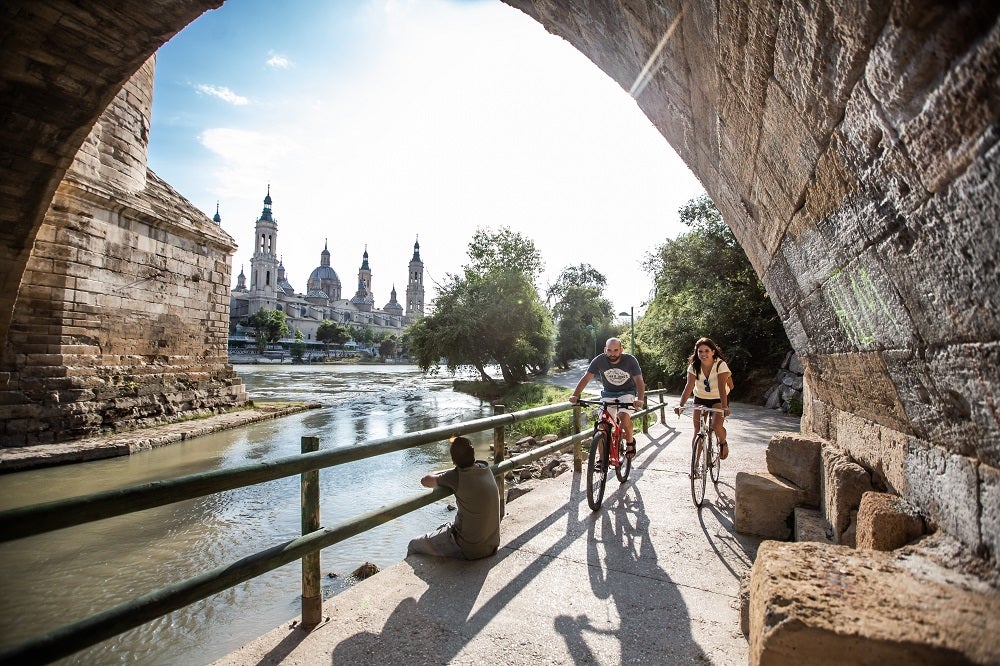
To get your bearings, get lost first. Casco Viejo (Old Town), bound by the Ebro River on its northern edge, is a jumble of historic streets connecting a dense concentration of churches, crowded tapas bars, Roman ruins and Mudejar architecture. This easily walkable area reveals murmurs of the city's many former selves at every turn, making it a joy to explore.
Start in Plaza de los Sitios, perhaps nipping into Zaragoza Museum (free, closed Mondays) first, for an overview of the city’s history. Everything else you see afterwards will have a greater context. There are also paintings by the Zaragoza’s adopted hero, Francisco Goya, whose honorific Goya Museum (€6/£5.30, closed Mondays) lies at Casco Viejo’s core. If you’re keeping to cobbled streets with very few vehicles, there’s no wrong turn in this part of the city.
Read more on Spain travel:
Follow the pilgrims
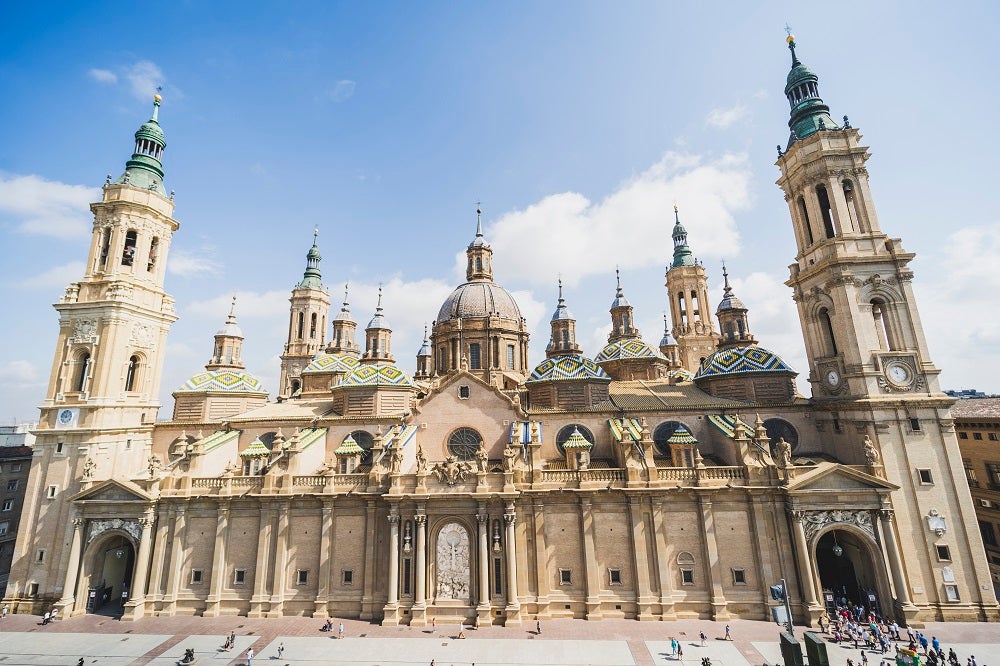
After the once-mighty Kingdom of Aragon threw off the yoke of Moorish rule in the 12th-century Reconquista, Zaragoza was selected as its capital. Predictably, following wars between religions, the Catholic Kings doubled down on their fervour. In Zaragoza, this became literal when two cathedrals, first La Seo and then, in the 17th century, El Pilar, were built.
Officially called Catedral-Basilica de Nuestra Senora del Pilar, El Pilar (€9/£7.90, includes access to La Seo, daily) is the more important of the two, drawing Catholic pilgrims from far and wide to pay their respects to the cathedral’s tiny wooden statue of the Virgin Mary, who is said to have scaled down a pillar from heaven to appear before St James (aka Santiago). El Pilar, with thick towers in the four corners and 11 cupolas, reflects double in the glassy waters of the Ebro River. Frescos inside the cupolas were painted by Goya.
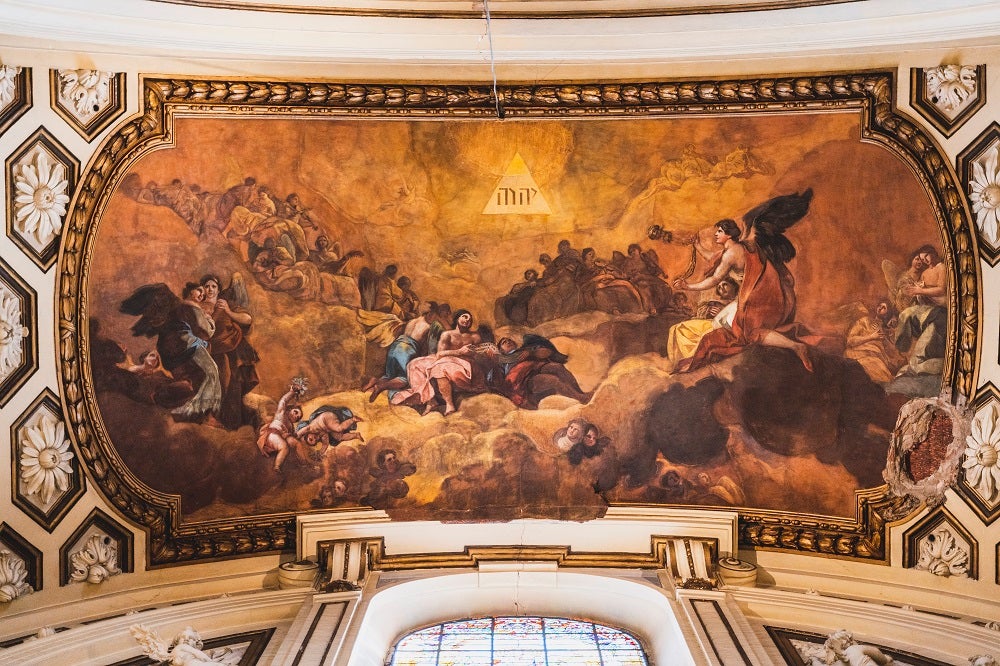
Ironically, Zaragoza’s finest architecture is in the Mudéjar style; mostly built by Muslim workers in the early centuries of Christian rule. This is particularly true of the older Catedral del Salvador (La Seo, €9/£7.90, includes access to El Pilar, daily) whose northeastern wall is a brick-and-tile tapestry of such intricacy that it’s a surprise there’s any structural integrity remaining. Throughout Casco Viejo, you’ll spot the arabesque flourishes on walls and towers which inspired Unesco to step forth and inscribe these buildings in 2001.
Celebrations and ancient Rome
The two cathedrals are connected by a huge square, Plaza del Pilar, which is dotted with modern water features and holds tens of thousands of spectators when the main processions of Semana Santa (Holy Week) file through, their drums reverberating off the walls of El Pilar like peals of thunder.
But beneath all of this is Zaragoza’s version 1.0. Museo del Foro de Caesaraugusta (€4/£3.50 or €7/£6.15 for entry to all Roman ruins in Zaragoza, closed Mondays), a modern structure of marbled panels and glass, acts as a portal to the subterranean collection of precise Roman streets, drainage channels and a Roman forum.
A few hundred metres to the south, Museo del Teatro de Caesaraugusta (€4/£3.50 or €7/£6.15 for entry to all Roman ruins in Zaragoza, closed Mondays) is a first-century Roman theatre. These ruins can be seen from the street through the railings, but the informative museum also allows you to wander around the theatre.
Where to stay
NH Ciudad de Zaragoza
While the city is not swimming in accommodation options, the majority of Zaragoza’s hotels cluster in the Casco Viejo. If El Pilar and the Ebro River are the key defining loci of Zaragoza’s character, then no hotel is quite so well placed as NH Ciudad, whose best rooms look out over both. The decor, particularly at reception, has mild Art Deco aspirations.
AZ The Botanic Hostel
Hostels in Zaragoza are a rare breed. Your best bet is The Botanic in the up-and-coming El Gancho neighbourhood, with its six or 12-bed dorms. There’s also a female-only dorm here, as well as a couple of good-value double rooms.
Silken Reino de Aragon
The Silken Reino sits on the city’s eastern edge, providing handy access to trendy La Magdalena’s nightlife scene. The crisp, modern exterior continues apace within, rendered in marble and wood. It’s not big on flair, but comfort is all but assured.
Read more of our Spain hotel reviews
Where to eat
To pack in some breakfast carbs ahead of an active day, grab some sugar-coated churros (essentially deep-fried doughnuts) and a cup of gloopy dipping chocolate at Churreria La Fama.
Lunchtime refuelling at a Casco Viejo tapas bar will put you in the company of thousands of locals, where typically Aragonese dishes, such as succulent ternasco (milk-fed lamb), are served. To try it as a tapa, check out La Ternasca where the dish is prepared traditionally or in half a dozen fusion cuisine styles. To try ternasco as part of a set menu del dia, Los Xarmientos works culinary wonders.
El Tubo is the most befuddling part of Casco Viejo’s labyrinth. But to get lost here could potentially be a delicious accident. Cramped taverns have sated appetites here for centuries, and many specialise in a handful of delicacies. Taberna Dona Casta churns out the fried, fat pellets known as croquetas, crammed with mushrooms and goats’ cheese, or pickled quail.
Across the street, Bar El Champi serves only one dish: a skewer of mushrooms, with or without a prawn on top, pinned to a hunk of fresh baguette and drizzled in a green garlic sauce. Mushrooms will never taste as good again.
Where to drink
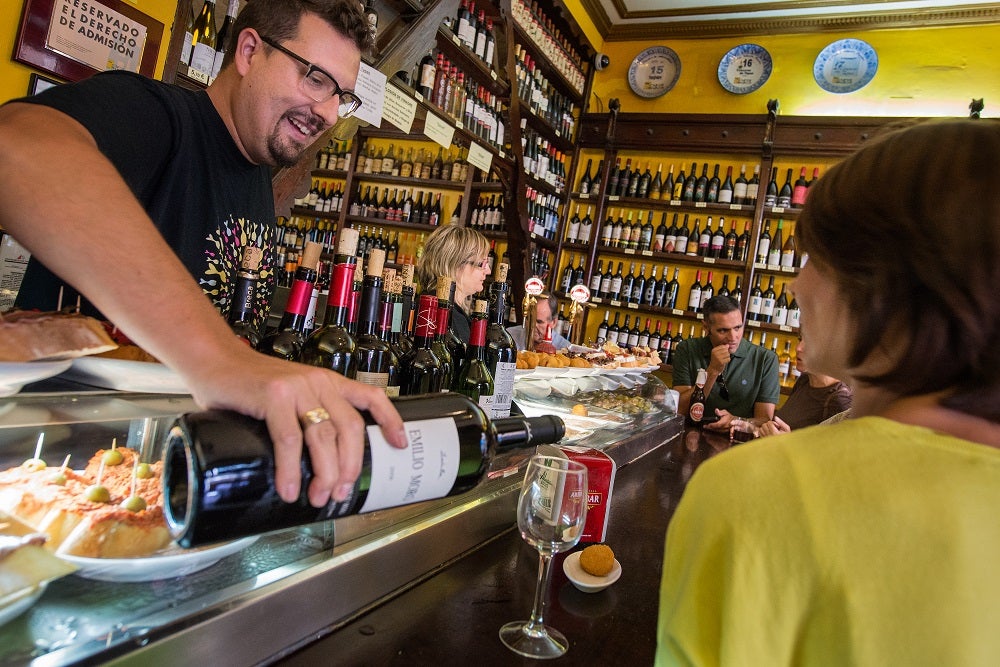
La Piparra is a cosy nook where a slab of chocolate cake accompanies strong arabica coffee. Located five minutes’ walk from Plaza del Pilar, this café has a sustainable, fair trade ethos and also operates as a fantastic vegan restaurant.
La Rioja lies 100km northeast of Zaragoza and plenty of exceptional wine makes its way downriver to the city’s wine bars. At Bodegas Almau, bottles line the walls and even the eaves, like the shelves of a medieval apothecary.
Like the rest of Spain, nothing really gets going until 8pm in Zaragoza. But from 6pm daily at Hoppy, craft beer fans are tasting their way around Europe via the variety of pale ales and IPAs from Aragon and beyond. There are 15 taps on rotation.
It may sound like the dingy hideout of a really rubbish vampire, but El Refugio del Crapula is a thrumming rock bar where musicians post up, often outside, with their drums, guitars and amps, bringing live music to the streets. The bar is on a busy street in the La Magdalena neighbourhood, where there’s no shortage of tapas bars.
Where to shop
If you’re planning a picnic in one of the riverside parks in Zaragoza, Mercado Central is the go-to place for fresh produce, where stalls bulge with olives, chorizo, fruit and vegetables.
Goods, handmade in Aragon, are often found in shops known as artesanias. A couple worth checking out are the leather handbags, wallets and belts at Artesania Berdejo, traditional ceramics with some really unique designs at Artesania Aliaga, and traditional Aragonese dresses and textiles at Artesanias Susana.
Chocolate was believed to have first made landfall in Europe at Monasterio de Piedra, courtesy of Hernan Cortes, who was busy bludgeoning his way through modern-day Mexico in the 16th century. Zaragoza being the monastery’s closest city, there’s a time-tested pride to the city’s chocolateries and pastry shops. Fantoba Hermanos is one such establishment, best known for its candied frutas de Aragon (Fruits of Aragon), which consist of large chunks of sugared plum, pear and apricot encased in rich chocolate.
If you’re really chocolate curious, Zaragoza even has a Wonka-esque Chocopass (€9/£7.90, on sale at tourist info booths and online). This allows you to try speciality chocolates and pastries at five out of the 15 participating purveyors of sugary treats.
Architectural highlight
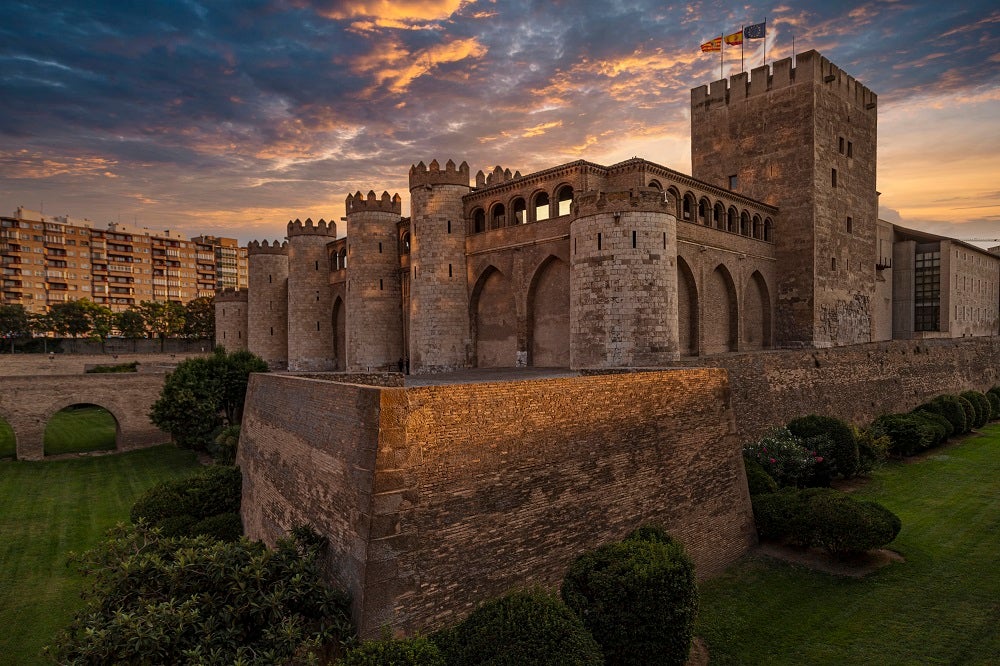
Moorish architecture in northern Spain reaches its apogee at Aljaferia Palace (€5/£4.40, guided visits only), whose fierce bulwarks wouldn’t look out of place on the Silk Road. Aljaferia Palace remains the seat of Aragon’s regional parliament, serving a similar function of governance that it enjoyed under the Moors when constructed in the 11th century.
Nuts and bolts
What currency do I need?
Euros.
What language is spoken?
Spanish.
Should I tip?
Around 5 to 10 per cent is customary, although it may be automatically added to the bill if you’re dining a la carte.
What’s the time difference?
Spain is one hour ahead of the UK and clocks change backwards and forwards on the same dates.
How should I get around?
By foot. The city is easy to explore under your own steam.
What’s the best view?
Stood halfway across Puente de Piedra (Stone Bridge) at sunset looking west, towards El Pilar and the Ebro River.
Insider tip?
If you learn one word in Zaragoza that is useful here but useless everywhere else, let it be juepincho (hweh-pin-choe). It pertains only to Thursday nights, when locals descend en masse upon the streets of La Magdalena neighbourhood to enjoy the drink-and-a-tapa special offers (customarily €2/£1.75 all-in) at 80 tapas bars in the area. Things really get going around 8pm, although the deals often begin from 6pm. It’s a great-value way to try out as many bars as you can in one evening.
Getting there
Trying to fly less?
Hop on a Eurostar train from London to Paris, then switch stations in Paris from Gare du Nord to Gare de Lyon, where a TGV train to Barcelona departs at least once daily. As Zaragoza sits midway on the main train line between Barcelona and Madrid, there are dozens of fast trains taking a couple of hours each way.
Fine with flying?
Ryanair flies direct from London Stansted to Zaragoza.
Join our commenting forum
Join thought-provoking conversations, follow other Independent readers and see their replies
Comments
Bookmark popover
Removed from bookmarks